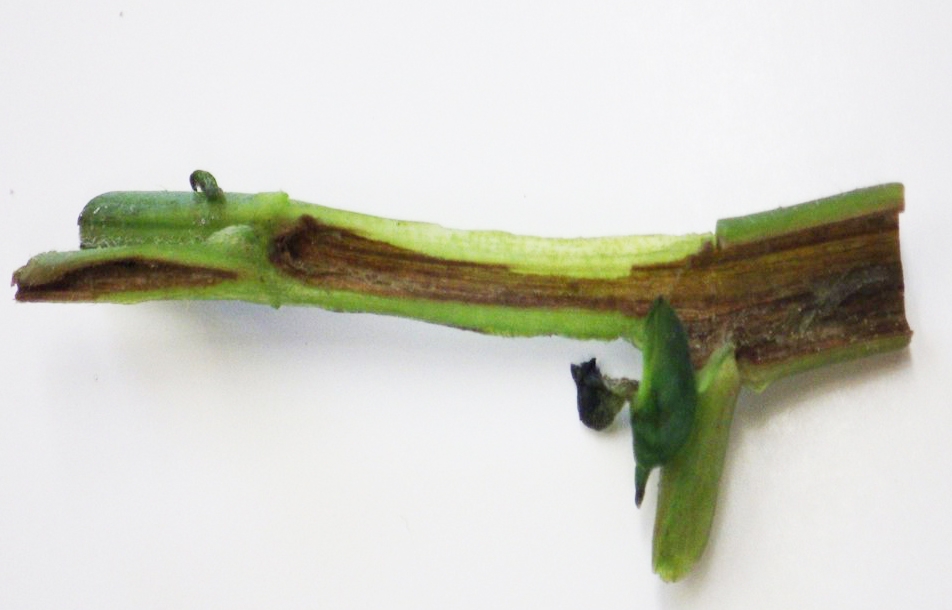
Features
Agronomy
Diseases
On the lookout for Dickeya
As spring arrives, potato growers are concerned about Dickeya, and Eugenia Banks, the Ontario potato specialist, has some points of interest to share.
Potato seed infected late in the season with Dickeya (new blackleg) usually does not show symptoms in the field before harvest nor in seed storages. This is because Dickeya requires high temperatures for the development of visible symptoms. The optimum temperature for Dickeya is above 25 C.
By contrast, the old blackleg (Pectobacterium) can develop at cool temperatures (8 C to 10 C), and symptoms are usually visible when cutting seed.
Banks says she received two questions about Dickeya:
Q: If dormant infection of Dickeya is suspected, could you incubate a sample of tubers at 25 C to 30 C so the tubers will show Dickeya symptoms in about 2 weeks?
A: Banks asked Steve Johnson (Maine) and Gary Secor (North Dakota) this question and both said no. It takes more than two weeks for the symptoms to develop. Banks says the first time she saw Dickeya symptoms developing from seed tubers with dormant infection was in late June (the seed tubers had been planted by the middle of May), and both Johnson and Secor agree.
Q: Are Dickeya lesions smelly?
A: We all know how smelly the old blackleg is. The slimy, black stems smell like rotten fish, a disgusting smell noticeable at least 30 feet away from an infected plant. Usually Dickeya is not smelly. The bacterium grows inside the stem moving up in the vascular tissue. Dickeya-infected stems are usually dark brown, not inky black, slimy and smelly like the old blackleg. Eventually, the infected stems may be invaded by secondary bacteria that cause a black rot. If, shortly after emergence, you see small, wilted plants with a black stem base, it is probably the old blackleg. If the summer is cool and wet, probably the old blackleg will prevail. In hot summers, Dickeya will be the prevalent disease (wilted foliage is also a symptom of Dickeya).
March 23, 2018 By Potatoes in Canada
 Dickeya growing inside a stem.
Dickeya growing inside a stem. Print this page